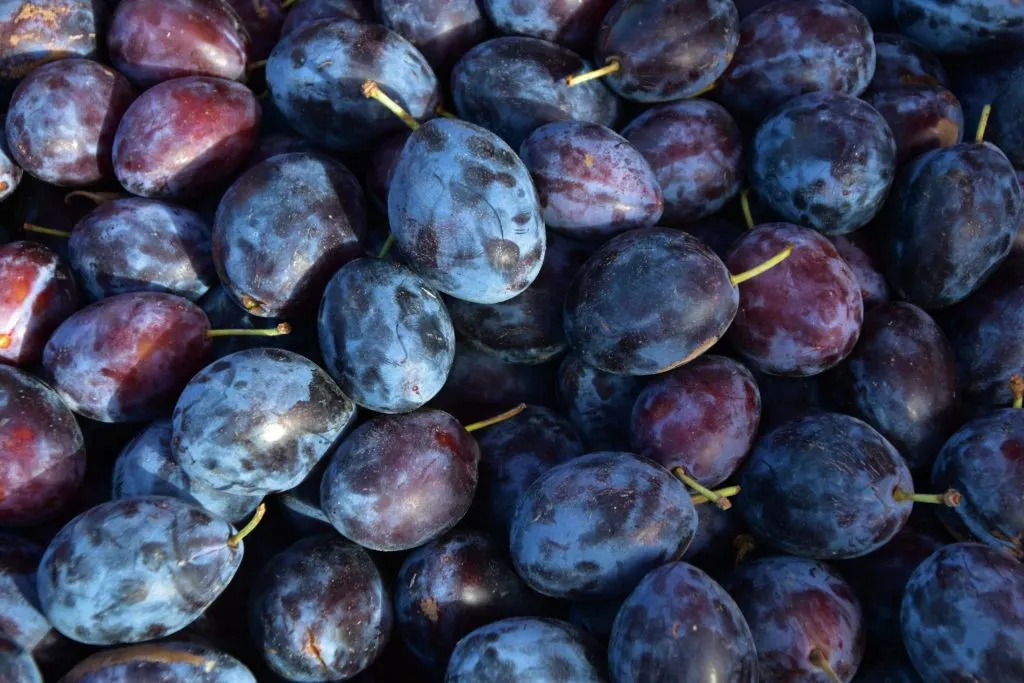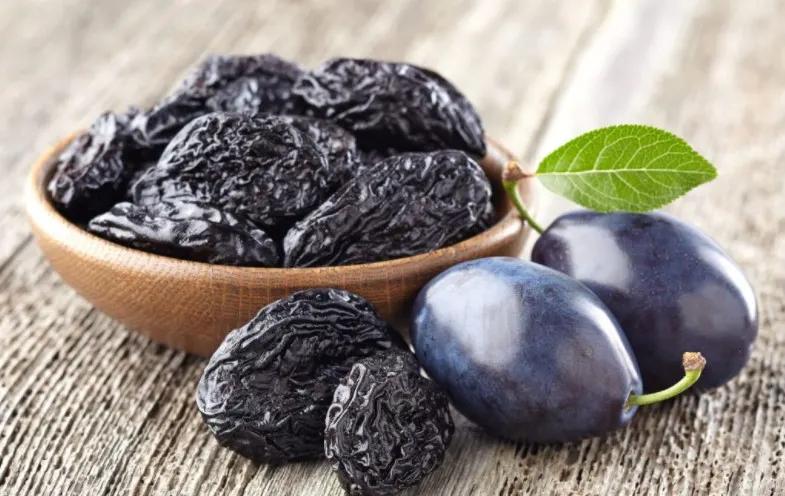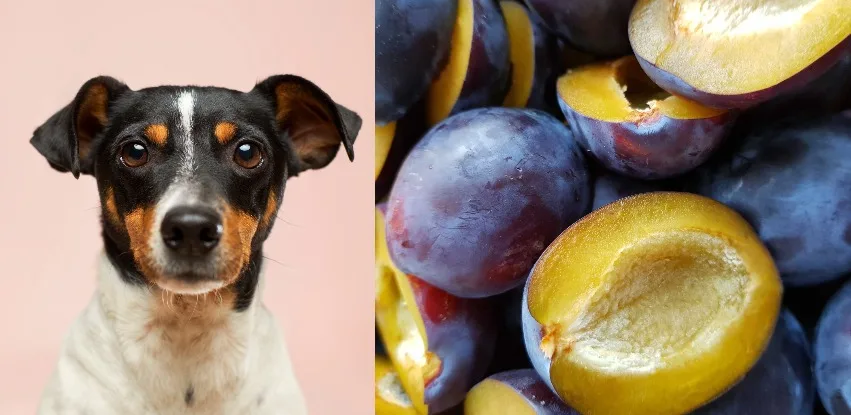Dogs love human food. No matter what you’re eating, your dog will probably think it’s the best food ever. It doesn’t matter if it’s some kind of fruit, vegetable, or some other human food. During summer they want to snack fruits, but did you know that not every fruit is safe for dogs? For example, grapes are actually toxic for them! But what about another summer fruit, juicy plums. Are plums safe for dogs? Can dogs eat plums?
With human foods, you never know what is safe for dogs. That’s why it’s important to do research. To learn which are safe for dogs and which are not.
Sometimes we don’t even think about if our favorite snack is safe for our dog. We just give them a bite. But this is so dangerous!
In this article, you’ll learn if plums are okay for canines to eat, and we’ll also talk about prunes and how safe those are.
Can dogs eat plums – The truth
Dogs will eat whatever you give them. And many of them even enjoy fruit! But, not all fruit bowl is safe for dogs. But what about plums? The answer is yes, dogs can eat plums. But it’s not that simple. Plum stones are also a “no-no” when it comes to dog nutrition.
There are many fruits that are safe for dogs, for example, apples, strawberries, blueberries, or watermelon. But plums are a bit more complicated.
Can dogs have plums
Plums are not toxic to dogs. But, there are some things you should know before you give your dog plums as a treat.
There is one big danger related to plums. Their pit. The flesh of plum is perfectly safe, but the pit can do a lot of harm.
Dogs around plum trees
That’s why you need to know how to feed plums to your dog. You can’t just give them a whole plum and call it a day. There are steps to feeding your dog plums.
Firstly, you have to wash the plum thoroughly. This way you’re removing dirt and bacteria or chemicals.
Secondly, cut the plum and remove the pit. It’s important to throw the pit away right away. You don’t want your dog to get his paws on it.
Thirdly, slice the plum or cut it into smaller pieces. You+re doing this to avoid choking. Your dog might try and eat the whole fruit, this is very dangerous. Half a plum can cause choking.
Why the pit is toxic
Besides being a choking hazard, there’s another reason why a plum pit isn’t safe.
And, it’s not only the pit of the plum that isn’t safe. The foliage, roots, stems aren’t safe either. This is because they contain amygdalin. When ingested this substance breaks down into hydrogen cyanide. And, as you probably already know, pure presence of cyanide is toxic. Plum poisoning from cyanide and actually be fatal if not treated.
Luckily, one plum pit doesn’t contain a lot of amygdalin. But, you should still be careful. Some dogs are more sensitive to cyanide than others. For example dogs with liver disease. The cyanide will cause cell respiration to stop and lead to respiratory collapse.
Symptoms of plum poisoning
Symptoms of cyanide poisoning include:
- reddening of the gums, tongue, and mouth,
- breathing difficulties,
- dilated pupils,
- panting,
- tremors,
- rapid breathing,
- agitation,
- foaming at the mouth,
- seizures,
- collapse
- kindey failure
If you notice any of these signs after your dog ate a plum pit contact your vet immediately or call an emergency hotline.
Benefits of plums
Plums are a healthy fruit. They aren’t as nutrient-dense as some other fruits, but they are a good source of vitamin A and vitamin C.
Vitamin A is key for healthy eyesight. It’s also great for keeping your dog’s coat and skin healthy.
Vitamin C is an important antioxidant that supports the immune system. It’s also great for reducing inflammation and for healthy bones and cartilage.
Plums also contain a lot of fiber which is key in maintaining healthy digestion and reducing constipation. It’s also good for controlling blood sugar levels.
This fruit also has a high water content, which means it can be a hydrating and refreshing snack.

But, there is also a problem with plums. They contain a lot of sugar. And even though it’s natural sugar, it’s still not good that your dog eats a lot of it. Sugar can lead to diabetes and obesity, even if it’s natural.
Now, the thing with human foods, especially fruit and vegetables is that your dog doesn’t need them. Your dog should get all the nutrients, so vitamins, minerals, fiber, and so on, from its food. So even though fruit is healthy, you shouldn’t rely on it as your dog’s only source of nutrients. This means fruit, including plums, should only be a treat and you should give it to your dog in moderation.
Can dogs eat prunes?
Prunes are dried plums, so they should be safe for dogs too? Right? No. While your dog can eat plums, they shouldn’t eat prunes.
When fruit is dried all that is left is sugar and fiber. Now, neither is toxic but if your dog eats too much sugar or fiber they can have serious health issues. For example, upset stomach, vomiting, diarrhea, abdominal pain.
ALSO READ Can dogs have dried mango? Is dried fruit safe?
Another reason is that plums are usually dried with the pit. And we’ve already discussed why the pit is so dangerous.

Of course, prunes aren’t toxic, but they have no health benefits to your dog either. So there is no need in giving them to your canine.
If you want to know more about why prunes aren’t safe for dogs, you can check out our article “Can dogs eat prunes? What you need to know!” There we also talk about ways to treat constipation in dogs, besides giving them prunes.
Conclusion
To conclude, can dogs eat plums? Yes, they can. But in moderation and without the pit. You need to be careful how you feed your dog plums as well as how much you give them.
But, if you want our honest opinion, your dog doesn’t have to eat plums. If you want to give them this fruit because you think it’s healthy, then don’t. There are better ways to make sure your dog gets its nutrients in. For example, getting them good, high-quality dog food. Everything just to avoid seeing them having difficulty breathing.
If your goal is just to let your dog enjoy a few pieces of plum, then go ahead. But, remember, don’t give them more than one or two plums a week.

